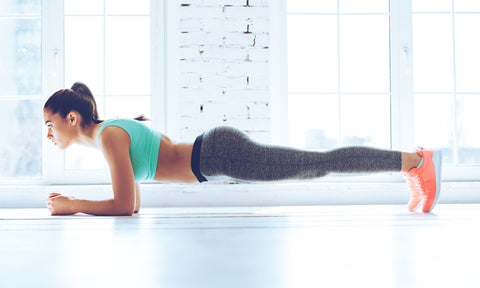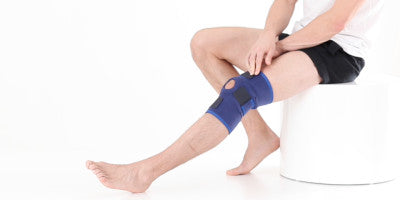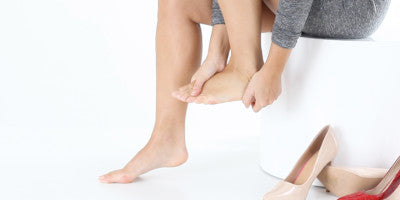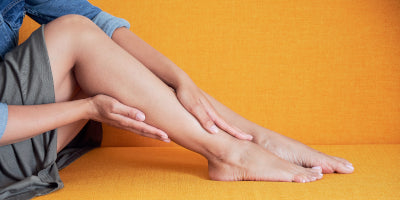Marathon Training Tips

Are you planning on taking part in a marathon this year? Whether you have a date in the diary or not, your training must be on course in order to tackle the monumental 26.2 miles. If you feel you’re not running enough (or perhaps too much) in your preparation, or you feel you need a steer, these simple tips may be all you need to get back on track!
Build Up Gradually
Let’s face it, running a marathon is not easy and needs a lot of work and preparation. The longer you prepare, the better. Start slow and build up gradually, reducing the risk of injury or burn-out. It’s about getting your body adapted to running. When you first begin training you should aim to be running continuously, however if you’re struggling, adopt a run/walk strategy that slowly reduces the walking portions!
Run a variety of training runs each week

You should aim to complete two or three shorter runs and one longer run each week. The purpose of the shorter runs is to condition your body and are a marathon training mainstay. At the beginning of your training regime, these runs should be two to three miles long, eventually increasing to a maximum of six miles when you’re three months out from race day. The pace at which you complete these runs is largely unimportant. Instead, you should just try and complete these runs, without walking or stopping. For the longer runs, set some time aside to complete these as you shouldn’t be trying to do them quickly. The weekend is probably the best time to be able to do these longer, slower runs at a maintainable pace. Initially, these runs can be as short as four miles gradually building up to a peak distance of 20 miles, about a month before race day. With these runs, it’s about maximising your running distance capacity. You may be asking, “shouldn’t I practice a 26.2 mile run?” and our answer is, no. Further distance on your long runs simply increases the risk of injury and 20 miles is already enough distance to condition your body to the thralls of a marathon. On the day, what’s 6.2 extra miles?
Keep It Fresh On The Day
In the last four weeks before the big day, begin to reduce your training. You should be ready to go for a marathon by this point and it is therefore now about preserving yourself and avoiding injury. That means you actually only run the 20 mile practice run once. In your final week of prep you should reduce down back to the beginning of your training. Do just three very easy two or three mile runs. We’d recommend doing a two mile run, slow and easy going run the day before marathon day to stay loose.
Do A Day Of Cross Training A Week

In addition to your four days of running, you should include a day of cross training (or as you may know it, circuit training). The action of running is incredibly repetitive and impactful on the same muscle groups, more so the further you go. Therefore, it is important to strengthen other areas of your body so there is no imbalance in muscle chains that could lead to injury. We believe it is so important that we’d advise dropping one of your shorter runs before we’d advise dropping your cross training day. Your legs may be carrying you but your core is also crucial to getting over that finishing line. We’d recommend squats, deadlifts and planks in reps and sets you feel comfortable in, steadily increasing your intensity.
Don't Forget To Stretch!

Your pre-run or pre-cross training stretch should be light and dynamic, with the aim to loosen your legs. Doing extensive cold, static stretching before your activity can lead to injury. We advise your pre-activity stretched should be dynamic, such as lunges instead of stretching standing still. If you feel you need to, run a short way and then do some more stretching on warmer muscles. After your run you should stretch for longer, really focussing on your hips, hamstrings, glutes and quads. Here, you can do static stretches as the main aim is to get as much length into the muscles that you have used most while running and which may have become tight during activity. The power of stretching after run comes into its own at the beginning of your training. If you wake up aching more than you could have done, your motivation to get back out there could be knocked.
What To Do If You Get Injured

Running as much as you are, the fact is you’re likely to suffer a minor injury. The best way to deal with them when you feel them happen is to stop, don’t try and run it off, you could simply aggravate the injury. Your first port of call should be with a physiotherapist who can properly assess the extent of your injury and work with you to develop any recovery plan that may be necessary. Don’t be disheartened, because you can take up to three weeks out of your training and pick up where you left off without any lost progress.
If you find yourself with the common condition known as Runner’s Knee, read this guide to Runner’s Knee and how to get back out there!
A condition that is seeing a rise in cases among runners is plantar fasciitis. It occurs when the plantar fascia, a thick band of tissue running along the bottom of you foot becomes inflamed. It can cause stabbing pain in the heel and the bottom of the foot. Read about exercises that are good for treating plantar fasciitis here. Our NeoThotics Pro-Flex insoles help treat the symptoms of plantar fasciitis, helping to ease pain. Additionally, they are designed in conjunction with leading podiatrists to have anti-fatigue technology which gives you energy back on every step to energize your legs, perfect for running ling distances.
Wear A Support If You Need To

The best way to recovery from injury is through active, rather than passive rehabilitation. This means strengthening weakened areas while you heal (while staying within pain barriers). Supports can be a great way to do this. Neo G have a number of supports ideal for running that offer support to knees, ankles, calves and other areas runner may need a little helping hand with. Neo G Active supports have been designed to be made from a lightweight breathable material that has been knitted with Multi-Zone Compression which gives you targeted support exactly where you need it. If you are suffering from pain in or need specialised support in specific muscle groups, NeoTape can be applied in a variety f ways and with the unique tension guide, you can apply it in exactly the way you need to.
There you go, some tips we think will help you with your ongoing marathon training. The best tip we can give you however is the further out from the big day you train, the better the results! Unless it specifically is to you, speed isn’t everything. Focus on form and consistency and naturally your times will drop!
Our Active range of knitted supports provide a snug, yet flexible fit during sporting and occupational activities. Multi Zone Compression surrounds muscles and joints for targeted support and the multi-way stretch allows flexible and safe movement, providing comfortable support and reducing the likelihood of injury. The specialist breathable fabric helps control moisture during intense activities, whilst the slimline, lightweight design means it can easily be worn under clothes for everyday wear.
NeoThotics orthotic insoles from Neo G are biomechanically engineered in conjunction with leading podiatrists to be class one medical devises that provide you with stability and support. To Learn more about the range, click here.













